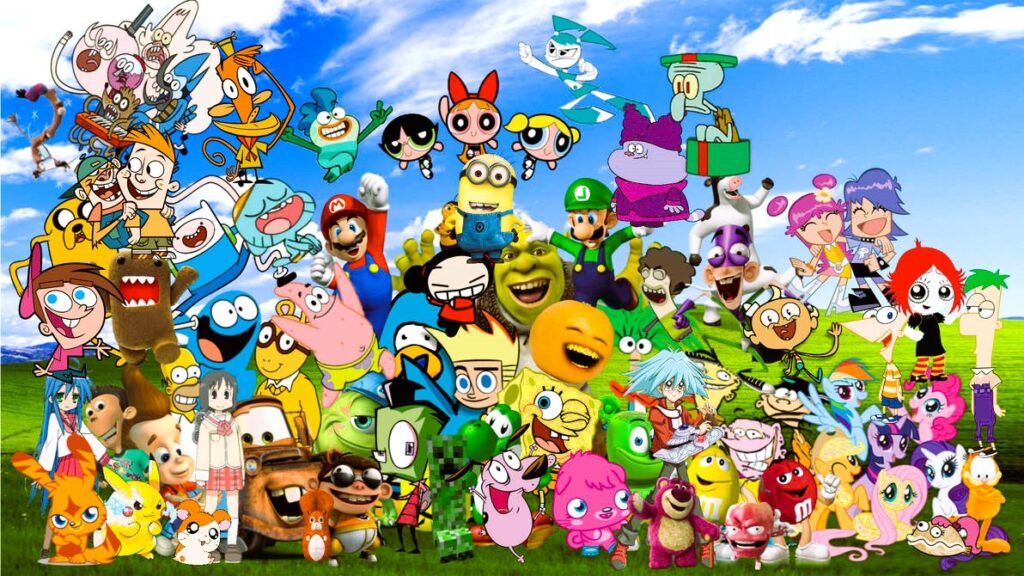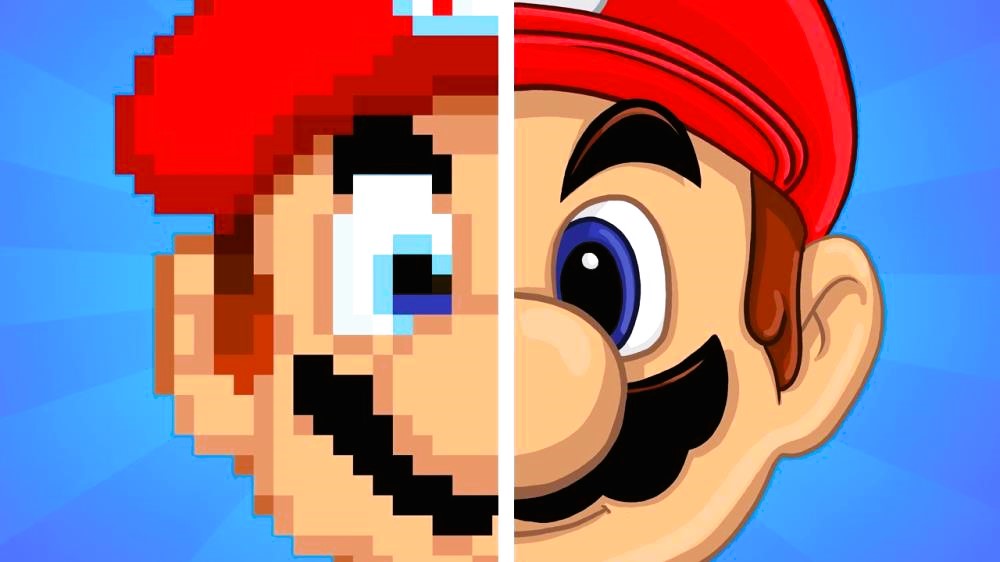Video games have come a long way since their inception, and one of the most striking aspects of this progression is the evolution of graphics. What started as simple, pixelated images has grown into hyper-realistic, lifelike visuals that push the boundaries of modern hardware. From the early days of 8-bit graphics to the current era of 4K resolution, video game graphics have undergone monumental changes. This article explores the journey of video game graphics from the 8-bit era to the ultra-high-definition graphics of today, highlighting key milestones in the industry’s development.
The 8-Bit Era: A Simple Start (1980s)
In the early 1980s, video game graphics were basic, using only a limited set of colors and shapes due to hardware constraints. The term “8-bit” refers to the number of bits used to represent a color or image, which determined the level of detail. Early consoles like the Atari 2600 and the Nintendo Entertainment System (NES) utilized 8-bit graphics, which were known for their blocky and pixelated appearance at terraria server host. Characters were often made up of simple geometric shapes, and the color palette was severely restricted.
Key Games:
- Super Mario Bros. (1985): Perhaps the most iconic 8-bit game, Super Mario Bros. featured simple yet charming graphics, with pixelated characters and a colorful, 2D side-scrolling world.
- Pac-Man (1980): A classic arcade game, Pac-Man showcased basic, abstract visuals that became synonymous with 8-bit graphics.
Despite their limitations, these early games were groundbreaking for their time, offering a unique visual style that remains nostalgic for many players today. The focus was on gameplay rather than graphical fidelity, and the simplicity of the graphics allowed for smooth, fast-paced action.
The 16-Bit Revolution: More Detail and Color (1990s)

The next leap in video game graphics came with the transition to 16-bit systems in the early 1990s. The additional bits allowed for a wider color palette and more detailed sprites, resulting in smoother, more realistic visuals. This era also introduced the first 16-bit consoles, such as the Sega Genesis and the Super Nintendo Entertainment System (SNES). These systems brought an increase in graphical fidelity, with more intricate backgrounds, better character designs, and a more dynamic look and feel.
Key Games:
- Sonic the Hedgehog (1991): Sonic the Hedgehog on the Sega Genesis became a defining title for the 16-bit era, featuring colorful, fast-paced graphics and detailed character designs.
- The Legend of Zelda: A Link to the Past (1991): This classic RPG from Nintendo showcased detailed top-down visuals with vibrant environments, paving the way for more immersive world-building in future games.
The 16-bit era marked a significant improvement in visual presentation, moving away from the limitations of earlier systems and offering players more visually engaging experiences. Although still relatively simple by today’s standards, 16-bit graphics were a crucial step forward in making video games more visually appealing and accessible to a larger audience. How to organize a laser tag tournament, read our tips for maximum fun.
The 32-Bit and 64-Bit Transition: The Third Dimension (Mid-1990s to Early 2000s)
The mid-1990s saw the introduction of 32-bit and 64-bit consoles, which allowed for 3D graphics. The PlayStation, Nintendo 64, and Sega Saturn were at the forefront of this era. 3D graphics were a game-changer, introducing the ability to create fully three-dimensional environments. While early 3D games had rough, polygonal graphics, this period marked the beginning of modern graphical evolution.
Key Games:
- Super Mario 64 (1996): One of the first major 3D platformers, Super Mario 64 pushed the boundaries of what was possible in 3D gaming, offering an open world and fully 3D-rendered environments.
- Final Fantasy VII (1997): The Final Fantasy series transitioned into 3D with Final Fantasy VII, which featured pre-rendered backgrounds and 3D character models, creating a more cinematic experience.
While the transition to 3D was groundbreaking, it was also challenging. Early 3D games often suffered from awkward camera angles, blocky textures, and low-poly models. However, the promise of 3D graphics was clear, and developers began refining these elements in the years that followed, leading to more polished experiences in the next generations.
The HD Era: High Definition Graphics (2000s to Early 2010s)

As technology advanced, so did the capabilities of gaming consoles. The Xbox 360 and PlayStation 3 ushered in the HD era, offering 720p and 1080p resolutions. These systems allowed for higher levels of detail, sharper textures, and more complex lighting and shading effects. The visuals were much closer to photorealism than ever before, with games starting to resemble real-world environments.
Key Games:
- Halo 3 (2007): The Halo series became a flagship title for high-definition gaming, with Halo 3 showcasing impressive graphics, large environments, and smooth animations.
- The Elder Scrolls V: Skyrim (2011): Skyrim featured expansive, detailed open worlds, with intricate environments and character models, all rendered in high-definition graphics.
The HD era also introduced advanced lighting and particle effects, bringing video game worlds to life in ways that were previously impossible. Textures were more detailed, and environments became increasingly interactive, with lighting and shadows playing a key role in enhancing immersion.
Learn More About HD Graphics on Wikipedia
The 4K Era: Ultra-High Definition Graphics (2010s to Present)
The most recent leap in video game graphics is the shift to 4K resolution. With the PlayStation 4 Pro, Xbox One X, and next-generation consoles like the PlayStation 5 and Xbox Series X, 4K graphics have become the new standard for high-end gaming. 4K gaming offers four times the resolution of 1080p, providing incredibly sharp, lifelike visuals. The increased resolution allows for more detailed textures, realistic character models, and dynamic lighting effects, making modern games look closer to reality than ever before.
Key Games:
- The Last of Us Part II (2020): The Last of Us Part II set new standards for realism, with highly detailed character models, lifelike animations, and photorealistic environments.
- Cyberpunk 2077 (2020): Despite its controversial launch, Cyberpunk 2077 is a visual marvel, offering a massive open world with highly detailed environments, ray-traced lighting, and impressive character models.
The 4K era has also seen the rise of technologies like ray tracing, which simulates realistic lighting and reflections, further enhancing graphical fidelity. The sheer detail and realism achievable in 4K games have made the visual experience an integral part of modern gaming.
The evolution of video game graphics has been nothing short of remarkable. From the simple, blocky visuals of 8-bit games to the breathtaking realism of 4K, each technological leap has brought players closer to immersive, photorealistic experiences. As hardware continues to improve, we can only imagine what the future holds for video game graphics. With the ongoing development of ray tracing, virtual reality, and even AI-driven graphics, the journey from 8-bit to 4K is far from over.

